1. Integrate your data
Connect all your sources to access history and be able to train Artificial Intelligence models.
Plan your supply chain demand, manage your inventory and evaluate the performance of your portfolio in a single tool.
Leading supply chain teams use Datup to improve their results



















Integrations to all the data sources that your company uses, such as ERP's, WMS and CRMs.
And if you have a new integration, we can connect directly.

Factors such as weather, holidays, lead times, exchange rate and other external factors are analyzed to calculate how they will impact demand.

We calculate month by month how much savings you are generating thanks to the accuracy of the forecasts and how much the accuracy rate was.
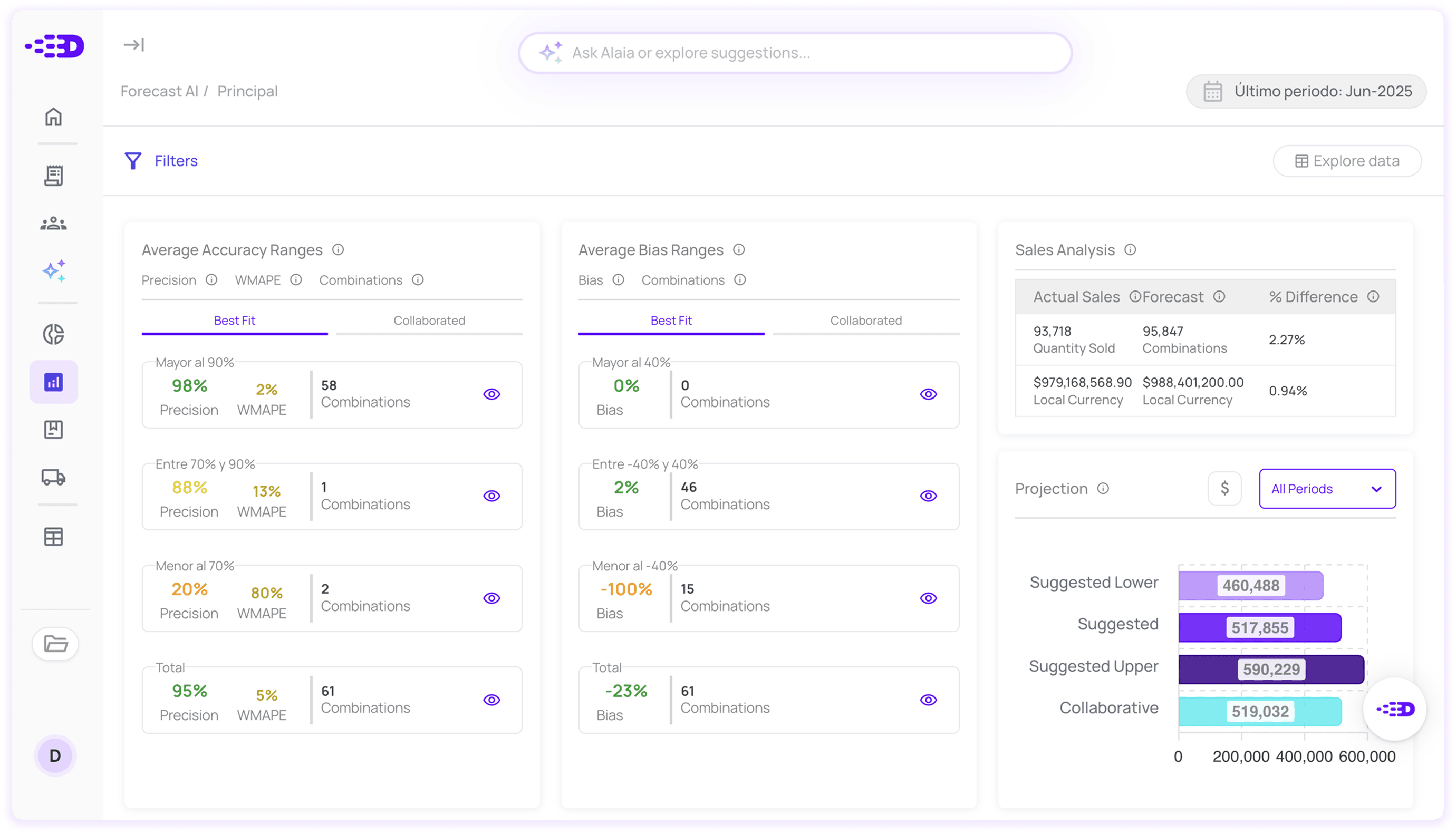
Generate collaborative demand scenarios and then compare actual demand vs. the suggested and collaborative forecasts.
.png)
Based on safety stock, supplier supply times and automatically expected demand.
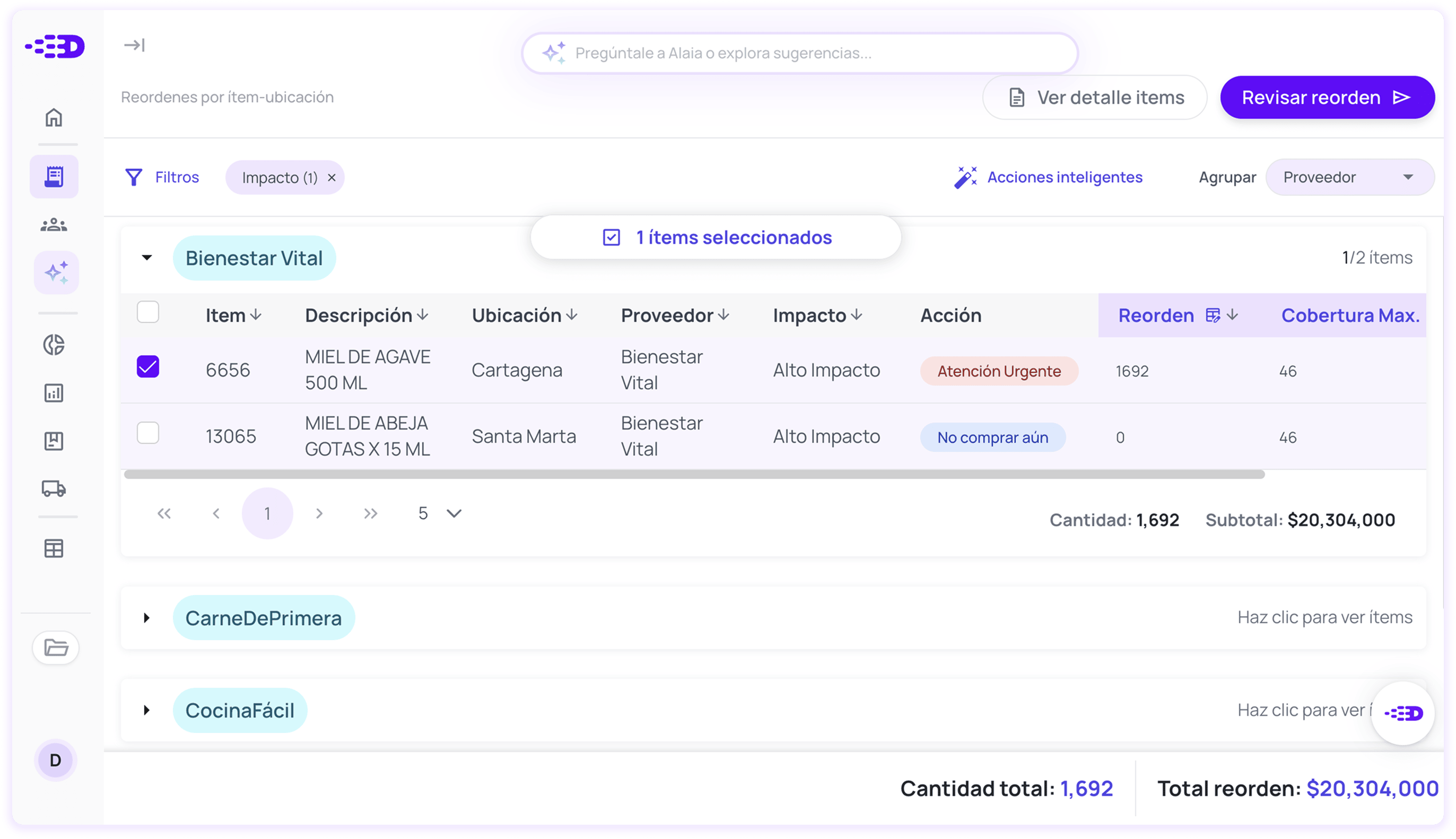

Do conversions from currency to units or from units to currency to calculate exactly what you need.

At Datup you have AlaiA, your trained Supply Chain assistant, from whom you can ask for optimization analyses based on your data that take seconds, not days or weeks.
From the start, we calculate how much savings you generate thanks to accurate forecasts.
We send you recommendations, insights and summaries based on your operation to other channels such as email or WhatsApp.
Without the need for extra technical equipment, at Datup we implement the solution in weeks, connecting your data from ERP, WMS, TMS and more.
Monthly subscription billed as soon as Datup processes your data. With no limit on the number of users, it includes all the collaborators you need and we also have no permanence clause.
At Datup we integrate with your ERP and we also send clean information back, which facilitates the workflow in daily activities.

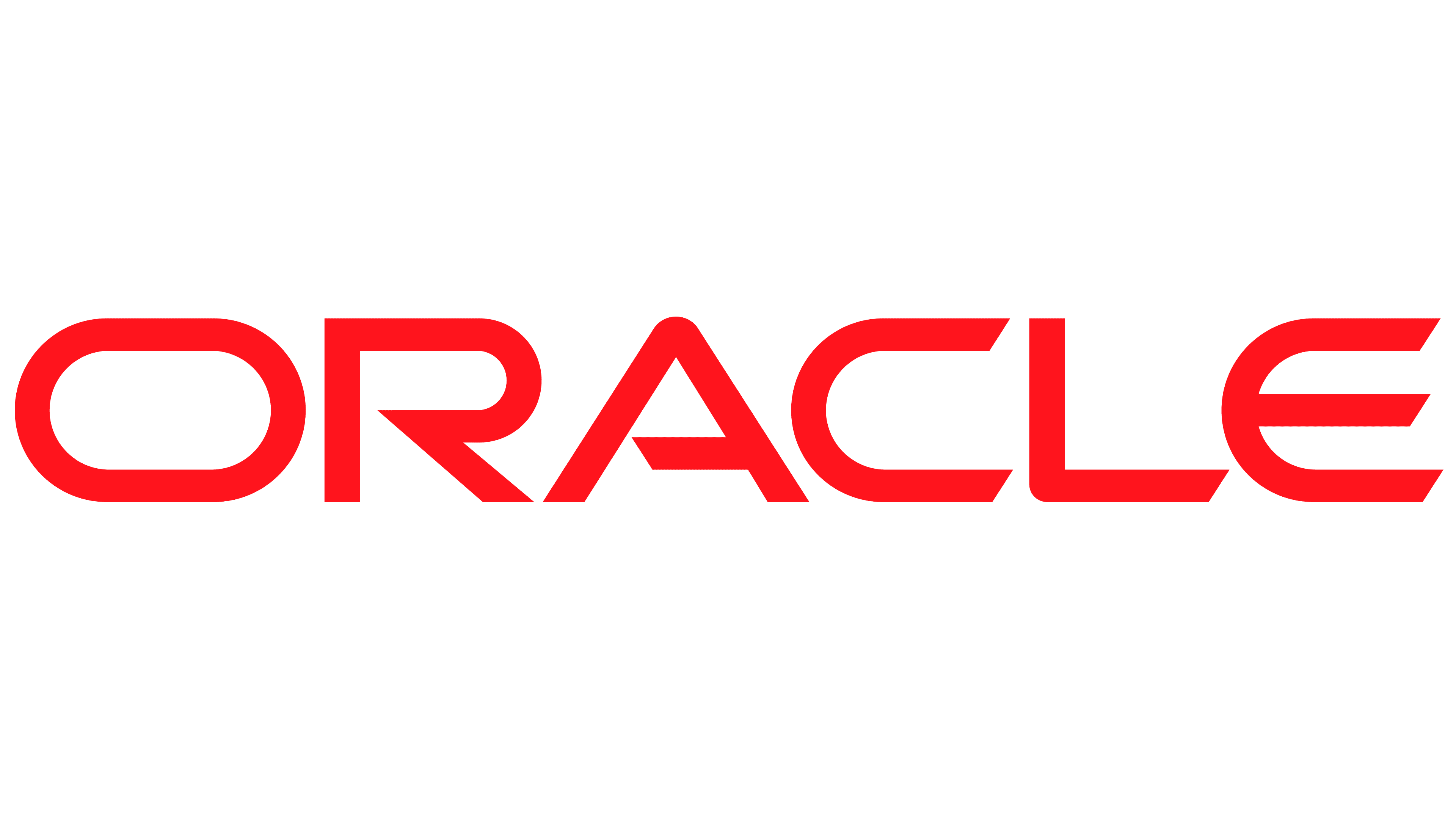

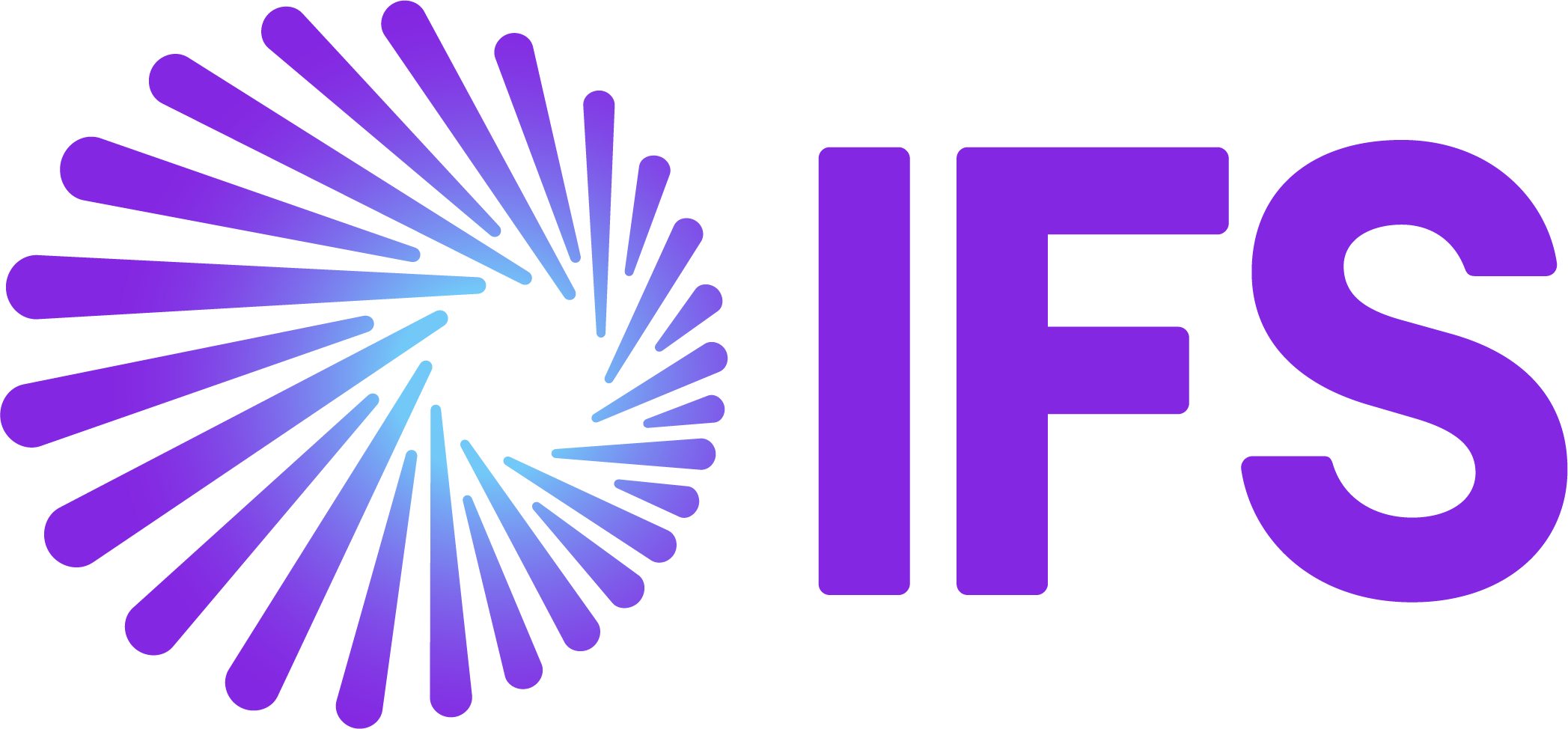

Datup strategically classifies your product portfolio to review the level of impact of the combinations according to the classification (ABC, FSN, XYZ) of each one.
.png)
Based on safety stock, supplier supply times and automatically expected demand.

In Datup, you can view actual sales versus estimated sales in a single view, it eliminates the need to review complex spreadsheets and streamlines strategic decision-making by quickly identifying deviations.

Implementing Artificial Intelligence (AI) in demand planning can significantly transform the efficiency and accuracy of your business. Discover the most important benefits of DATUP.
%2011.05.41%E2%80%AFa.%C2%A0m..png)
Datup generates forecasting scenarios (base, optimistic and pessimistic) for specific products and locations. This allows strategic decisions to be made in the face of different market conditions, anticipating changes in demand and responding in an agile way.

Based on forecasts, the platform dynamically adjusts inventory levels, replenishment times and safety stocks. This prevents stock failures and excesses, improving availability and reducing operating costs.
%2011.16.26%E2%80%AFa.%C2%A0m..png)
Beyond descriptive analysis, Datup provides recommendations for purchase, distribution and replacement. Its prescriptive intelligence guides concrete actions to optimize the operation, maximize margins and ensure availability without excess fixed capital.
%2011.02.17%E2%80%AFa.%C2%A0m..png)
Beyond descriptive analysis, Datup provides recommendations for purchase, distribution and replacement. Its prescriptive intelligence guides concrete actions to optimize the operation, maximize margins and ensure availability without excess fixed capital.
%2011.18.30%E2%80%AFa.%C2%A0m..png)
By avoiding overstock and adjusting purchases to real demand, working capital is freed up and storage costs are reduced. This translates into a tangible improvement in cash flow and EBIT, boosting business profitability.

Check demand by category, product or channel for differentiated forecasts.
Bring all the data to Excel with a single click to manipulate the data and make custom calculations.

Compare current forecasts vs. forecasts from past months, quarters, and years.

Share with your team by email, download in PDF or use a link to view the report in real time.

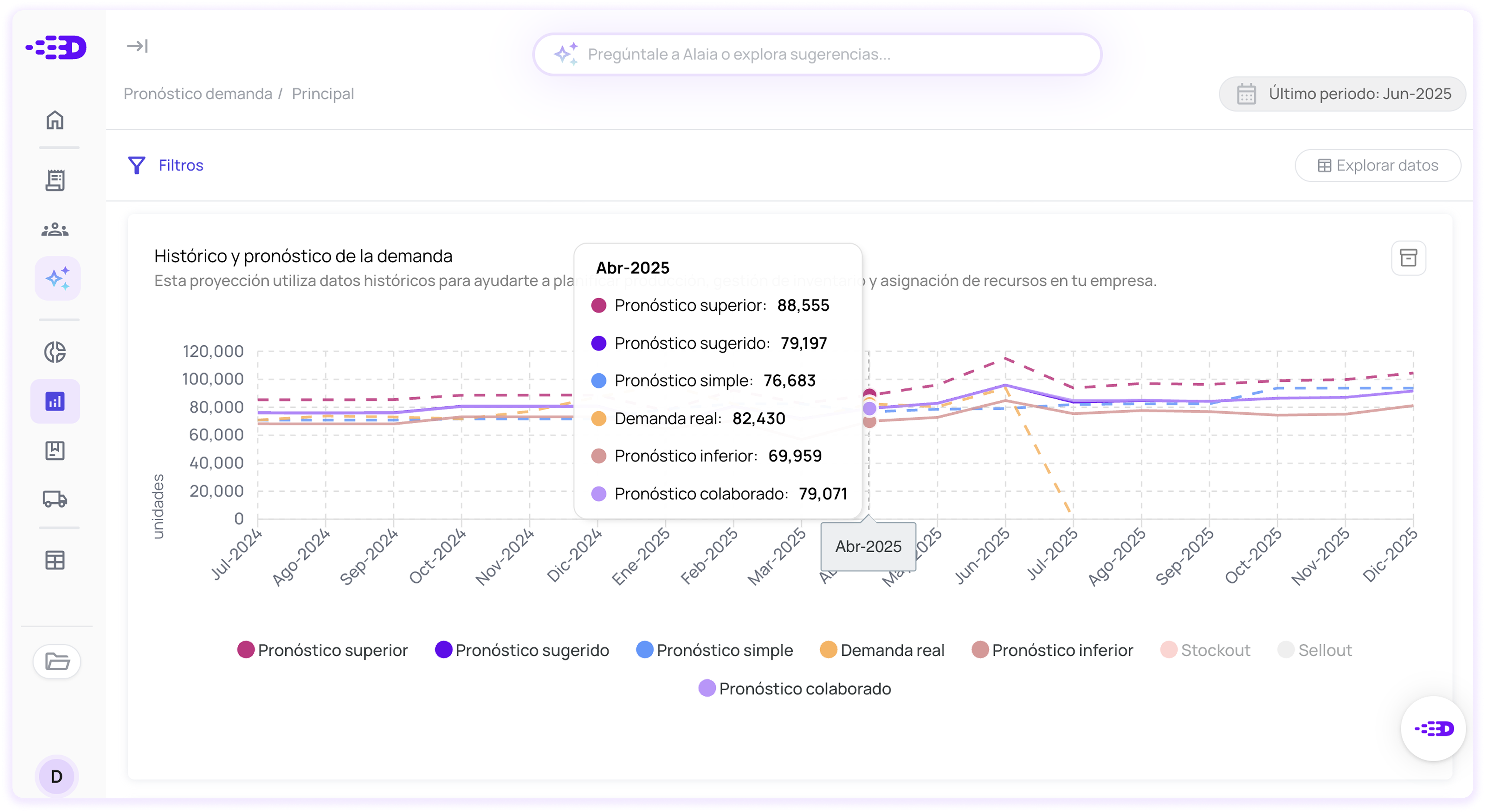
Ask about the estimated demand for any product in your portfolio, or the consolidated one. Analyze different scenarios, while collaborating with other teams.
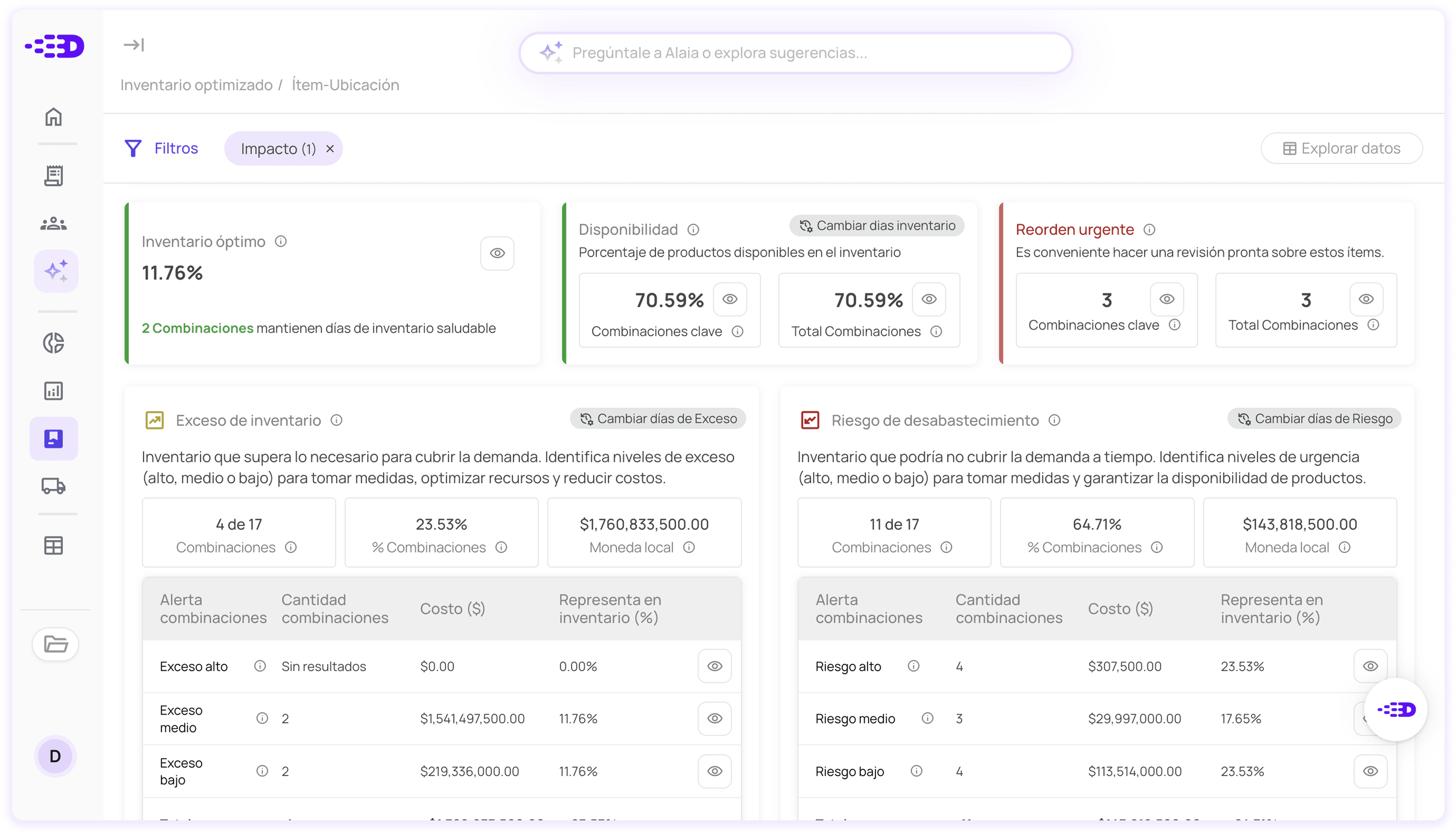
Optimize your inventory and define what you should buy and when you should buy it. Calculate reorder points, optimize stock levels and synchronize purchases with real demand to reduce bankruptcies and excesses
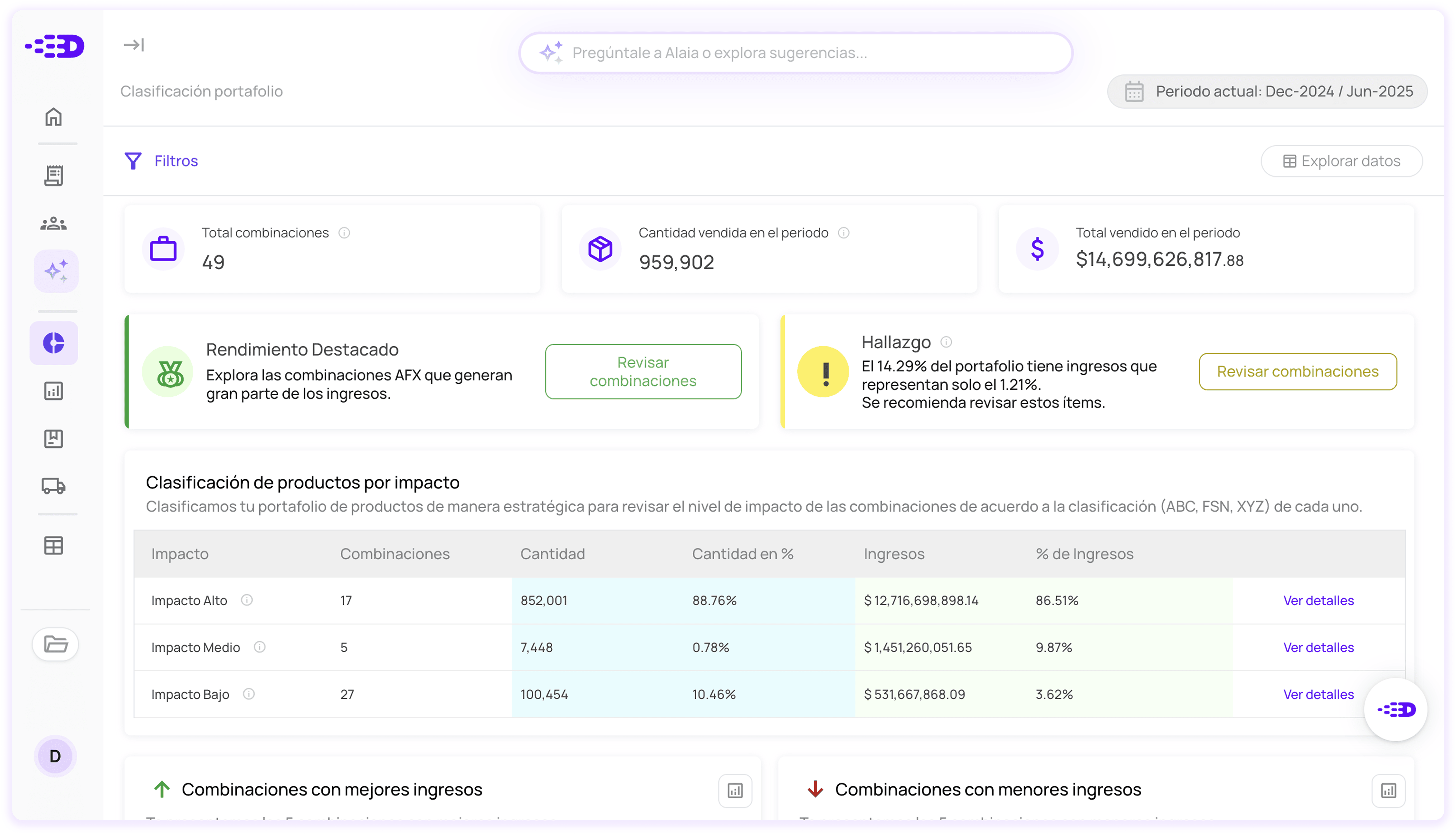
Classify your products by profit margin, turnover and price to find which are the most profitable and strategic, and which you should reevaluate to ensure that you don't have too many low-turnover products in stock.








